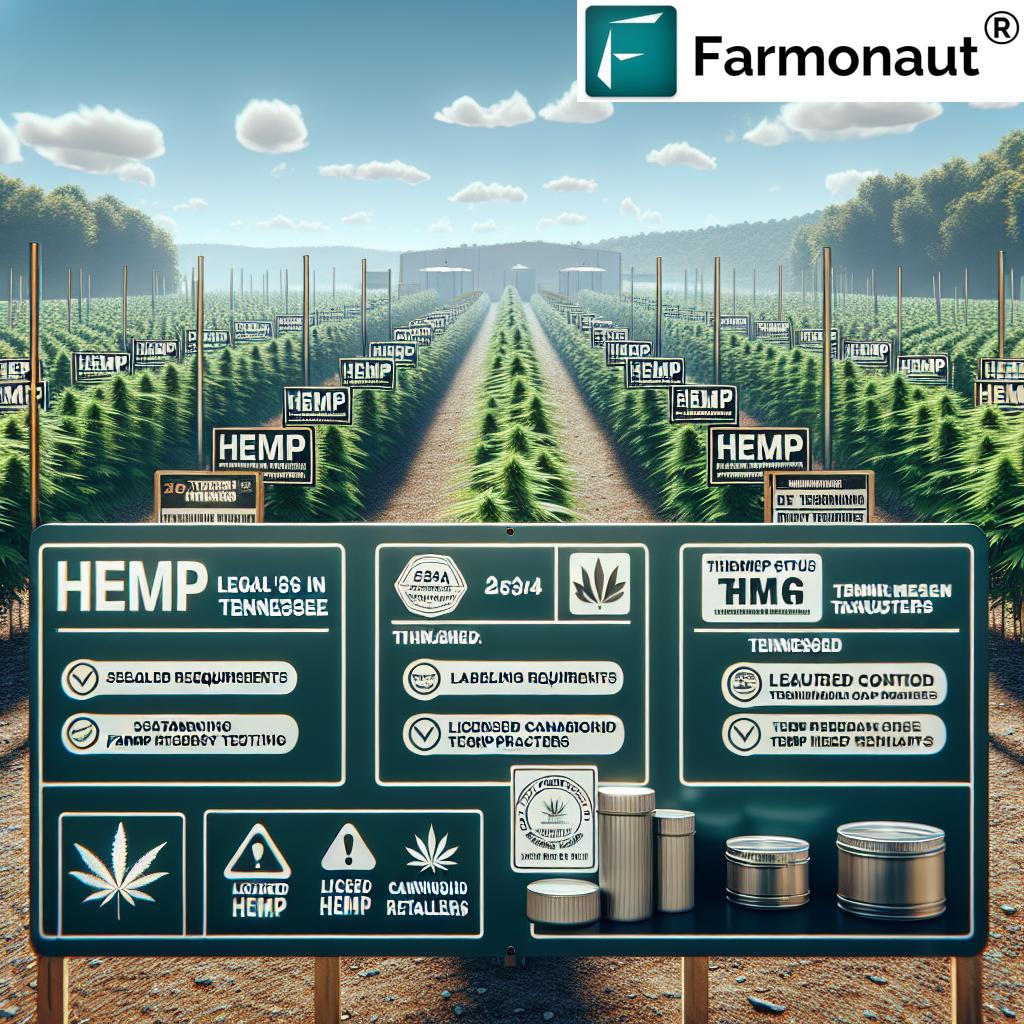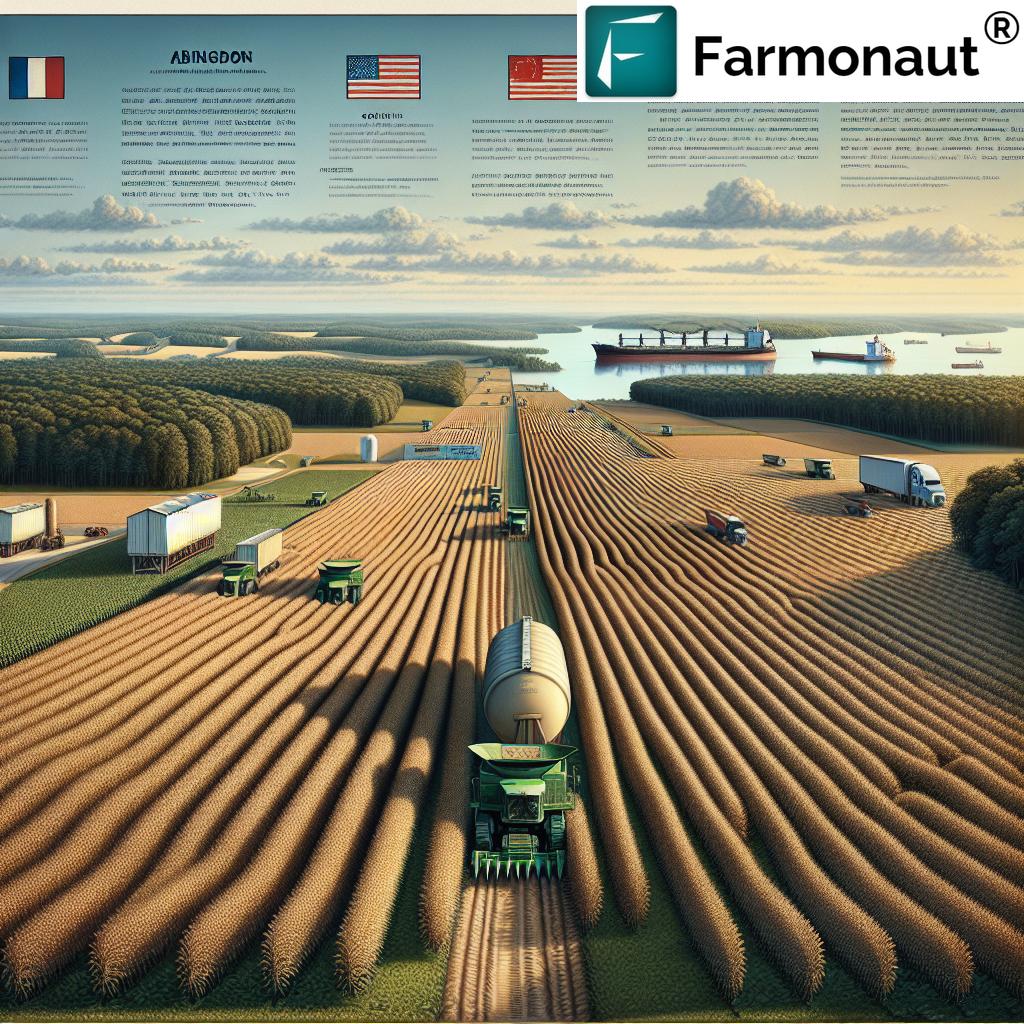Agricultural Exports & Success Stories: CA, CO 2025
“California’s agricultural exports are projected to exceed $25 billion in 2025, leading the nation in global market reach.”
Summary: Agricultural Exports & Success Stories in California and Colorado – A 2025 Perspective
Agriculture remains a cornerstone of the U.S. economy, and states like California and Colorado exemplify the sector’s resilience, innovation, and international market prowess. In this comprehensive overview, we journey through the agricultural exports & success stories California 2023, agricultural exports & success stories Colorado 2023, and beyond into 2025, revealing how innovation, sustainability, and strategic engagement propel these states to the top of the global agricultural stage. From California’s dominance in almonds, grapes, strawberries, and dairy to Colorado’s rising star status in organic produce and hemp products, this 2025 perspective spotlights practices and success stories reshaping U.S. agriculture. We also explore how advanced technologies and climate-smart initiatives—many accessible via platforms like Farmonaut—are optimizing production, transparency, and sustainability for the future.
Introduction to Agricultural Exports & Success Stories: The 2025 Stage
The story of U.S. agriculture is one of continual progress, resilience amid challenges, and a relentless pursuit of global leadership. As we progress through 2025, examining “agricultural exports & success stories” in California and Colorado reveals how these states leverage their unique climates, diverse crops, market strategies, and innovation-driven practices to drive remarkable export growth. These success stories are more than statistics—they are testimony to adaptation, technological advancement, and a commitment to sustainable agriculture.
This blog will:
- Analyze key drivers behind California and Colorado’s export leadership in 2025.
- Highlight global, market-focused case studies featuring almonds, wine, dairy, organic produce, hemp, and more.
- Present a comparative case-study table to facilitate quick insights.
- Discuss enabling technologies, including satellite-based monitoring, AI, traceability, and climate-smart practices.
- Provide actionable insights for growers, exporters, agribusinesses, and policymakers seeking to thrive in emerging markets.
California: Dominating the Global Agricultural Export Market in 2025
With its fertile Central Valley, varied climates, and culture of innovation, California continues to dominate U.S. agricultural exports in 2025. Accounting for nearly 13% of the U.S. total agricultural export value since 2023, California excels in both the volume and value of products exported. From bulk commodities to premium specialty foods, California shapes food trends, sets international export standards, and consistently overcomes complex environmental and market challenges.
Key Pillars of California’s 2025 Export Success:
- Diverse Crop Production: The state’s unique Central Valley and varying climatic zones enable unparalleled production of high-value crops, including almonds, grapes, strawberries, and a vast range of fruits, nuts, and vegetables.
- Focus on Innovation: Advanced irrigation technologies, AI-driven monitoring (including satellite-based carbon footprinting for sustainability), and robust adoption of precision agriculture drive yield improvements, resource efficiency, and eco-friendliness.
- Sustainable Practices: Adapting to challenges like drought and water restrictions, California growers emphasize water-wise practices, reduced chemical use, and responsible land stewardship.
- Global Market Diversification: Strategic trade agreements, new export markets, and targeted branding efforts position California’s products as premium, traceable, and responsible—especially valued in Europe, Asia, Latin America, and the Middle East.
California agricultural exports & success stories 2023–2025 validate these pillars—case studies in almonds, wine, and dairy showcase the sector’s adaptability, market strength, and consumer-focused innovation.
Agriculture Success Stories: California 2023–2025
Let’s examine real-world “agriculture success stories” that have defined California’s trajectory from 2023–2025.
The California Almond Industry: Record Exports Through Sustainability & Technology
California’s position as the world’s dominant almond supplier remains unchallenged in 2025, despite headwinds such as persistent droughts, water use restrictions, and evolving global market dynamics. The almond sector stands as a prime example of how innovation and sustainable practices propel export growth.
- Almond growers adopted water-efficient drip and micro-irrigation technologies, paired with precise satellite crop monitoring, offsetting water scarcity and boosting yields.
- Responsible water and fertilizer management—verifiable through blockchain-based traceability systems (Learn more about product traceability)—raised buyer confidence in Europe and Asia, where demand for “responsibly grown” nuts surged.
- By 2024, California almond exports reached record highs, with export volumes increasing over 8% from 2023, illustrating market trust in sustainable U.S. produce.
This agricultural success story exemplifies how environmental stewardship and technology-enabled resource management lead to global success.
California Wine Industry: Expanding Global Footprint Via Precision & Market Innovation
California is a historic wine powerhouse, and between 2023–2025, vintners have capitalized on:
- Precision agtech: Satellite-guided vineyard monitoring, AI-based grape advisory, and data-driven irrigation for optimal grape quality and yield.
- Organic & Biodynamic Focus: Farms attained international certification, expanded organic acreage, and emphasized climate-smart production.
- Strategic Export Initiatives: California wines marketed in emerging high-growth regions—Southeast Asia, Latin America—where demand for premium, authentic labels increased.
- Result: California wine exports achieved record premiums and reached new demographics, cementing the state’s brand as a top-tier international player.
Strawberries, Grapes, & Dairy: Meeting Global Demand Through Quality & Consistency
California’s ability to produce a variety of high-value, heavily exported crops owes much to:
- Year-round growing seasons enabled by climate diversity.
- Advanced supply chain management, supported by technology and blockchain traceability, assures international buyers of food origin, safety, and quality.
- Dairy exports, propelled by food safety standards and innovation in products (like organic and lactose-free options) attract markets across Asia and Latin America.
“Colorado’s sustainable farming innovations contributed to a 15% increase in agricultural export value between 2023 and 2025.”
Colorado: A Rising Star in Agricultural Exports & Innovations
While traditionally renowned for livestock and cereals, Colorado has emerged as a dynamic leader in agricultural exports—especially in the sectors of organic produce, hemp-derived products, and climate-resilient specialty crops. From 2023–2025, the state’s export value growth of 7.4%—bolstered by an even steeper 15% attributable to sustainability innovation—has made Colorado a model of adaptation and diversification.
Drivers of Colorado’s Export Success in 2025:
- Sustainable and Organic Emphasis: Statewide prioritization of organic certification, soil health initiatives, and regenerative practices meet global consumer demands for clean, healthy foods.
- Greenhouse, Vertical, & Precision Technologies: Growers extend seasons, control environments, and maximize output—regardless of the Rocky Mountain climate or shorter traditional growing seasons.
- Value-Added Diversification: Popularity in hemp, CBD, and specialty grains allows Colorado to tap into high-growth emerging export markets.
- Transparent Supply Chains: Adoption of blockchain-based traceability provides international buyers with trusted sourcing information.
These factors reveal how the “agricultural exports & success stories” Colorado 2023 and expanding into 2025, combine resource sustainability, crop diversification, and the pursuit of innovation to propel international success.
Agriculture Success Stories: Colorado 2023–2025
Here are several standout “agriculture success stories” California 2023 and “agricultural exports & success stories” Colorado 2023, setting benchmarks for the U.S. agricultural sector.
Organic Vegetables: Season-Defying Supply & Market Penetration
- Colorado growers increased investments in organic certification and greenhouse expansion, lessening limitations from harsh winters or short summers.
- Steady, reliable supply of organic peppers, lettuce, root vegetables, and herbs found eager buyers in both established and emerging Asian and European markets.
- Success resulted from data-driven crop management—growers used digital tools, precision irrigation (often paired with large scale farm management platforms), and remote resource allocation.
Hemp & CBD: Regulatory Leadership Drives Global Export Capability
Colorado has led the national charge in hemp production, thanks to early regulatory clarity, significant investment in research, and a willingness to innovate. Success is apparent in:
- Export of CBD extracts, hemp seeds, and hemp-based textiles to the EU, Canada, South America, and select Asian markets.
- Partnerships with international processors, allowing for further value-addition and brand recognition.
- Use of traceability technology to verify product origins, ensuring compliance with stringent import standards.
These efforts reflect how Colorado’s agricultural sector pivots toward future-proof crops, value innovation, and eco-centric practices, opening new global revenue streams.
Comparative Case Study Table: California vs. Colorado Exports & Success Stories
| Commodity | California: Estimated Export Value (2025, USD million) | California: Key Success Highlight | Colorado: Estimated Export Value (2025, USD million) | Colorado: Key Success Highlight |
|---|---|---|---|---|
| Almonds | 6,950 | World-leading grower; embraced precision irrigation and blockchain traceability for record sustainable exports. | 25 | Emerging nut crop using data-driven deficit irrigation on Colorado’s Western Slope. |
| Wine / Grapes | 1,450 | Precision viticulture and organic winemaking expanded market reach to Asia & Latin America. | 38 | Boutique wineries using high-altitude and cold-hardy grape varietals, earning premium export prices. |
| Strawberries | 800 | Year-round harvest via climate micro-zoning and innovative pest management. | 6 | Greenhouse-grown organic berries for niche Asian and domestic markets. |
| Dairy | 2,800 | Export-focused: shifted to organic and value-added dairy, meeting lactose-free and premium demand in Asia. | 740 | Processed cheese and yogurt for Mexico and U.S. Southeast, driven by sustainable feeding regimes. |
| Organic Vegetables | 465 | Extensive organic acreage, enabled by digital crop management. | 215 | Greenhouse & vertical tech ensure year-round, export-quality organic peppers and lettuce. |
| Hemp Products | 90 | Growing, but not leading: focus on hemp textiles and seed export. | 410 | National leader in hemp & CBD exports, with regulatory clarity and AI supply chain monitoring. |
| Beef & Livestock | 760 | Sustainably raised, hormone-free beef sold to premium Asian markets. | 1,600 | Major contributor to total Colorado ag exports; focus on traceability and low-carbon footprint. |
| Wheat, Cereals, Grains | 570 | Innovations in drought-resistant wheat varieties and satellite-based growth analytics. | 1,150 | Cold-hardy grains for Northern Europe and North African export markets. |
*Values are estimates for 2025, based on reported growth rates and current market data trends.
Technological Advancements & Sustainability: The Backbone of Export Growth
Both California and Colorado have solidified their places among global agricultural leaders by systematically integrating technology and sustainability into their operations. Let’s explore how these success stories emerge:
- Precision Irrigation: AI-guided water management reduces waste, increases yields, and is essential in drought-prone regions like California’s Central Valley and Colorado’s high plains.
- Remote Crop & Resource Monitoring: Multispectral satellite imagery provides near real-time crop status, enabling proactive pest/disease intervention and optimized harvest timing.
- Blockchain Traceability: Blockchain powered supply chain traceability is increasingly critical for accessing premium, health-focused export markets. Buyers demand verifiable proof of a product’s journey from farm to table.
- Carbon Footprint Tracking: Carbon footprint monitoring and sustainability auditing help exporters earn preferred-buyer status, mitigate regulatory risks, and access new eco-friendly markets.
- Sustainability Drives Engagement: Prioritizing climate-smart agriculture at every stage boosts resilience, increases international buyer confidence, and opens doors in European, Asian, and Latin American markets.
These trends are not isolated—they are foundational in the ongoing transformation of U.S. agriculture, as evidenced by agricultural exports & success stories California 2023, agricultural exports & success stories Colorado 2023, and projections for 2025 and beyond.
Farmonaut and Satellite-Driven Agricultural Innovation
In an era where data, transparency, and precision agriculture are imperative, tools like those from Farmonaut enable real-time, technology-driven transformation for agriculture, mining, and infrastructure sectors.
- Real-time Satellite Monitoring: Supports crop health, soil moisture, and resource management.
- Jeevn AI Advisory: AI-based agronomy and resource usage guidance based on the latest satellite insights.
- Blockchain Traceability: Builds transparency, trust, and provides proof-of-origin for international buyers.
- Fleet Resource Management: Logistics and harvest operations benefit from optimization and safety tracking. Explore Fleet Management Solutions.
- Environmental Impact Monitoring: Farms and large agri-enterprises can monitor and reduce their carbon footprint, opening new market opportunities. Check Carbon Footprinting Platform.
Through enhanced farm management platforms, crop loans and insurance risk management (see Crop Loan & Insurance APIs), and seamless integration across Android, iOS, web, or API, Farmonaut brings advanced technology to the field, supporting American growers and exporters in their pursuit of success, sustainability, and lasting global impact.
For developer integration:
API Access: Farmonaut API |
Docs: API Developer Documentation
Emerging Trends and Future Outlook for 2025 & Beyond
Examining “agricultural exports & success stories” in California and Colorado delivers essential perspective: adaptability, sustainability, market responsiveness, and technological superiority remain engines of growth for 2025 and beyond.
- Climate-Smart/Regenerative Practices: Enhanced focus on carbon sequestration, soil health, and eco-certification drives differentiation.
- Export Market Diversification: Penetration into non-traditional markets—ASEAN, Africa, Middle East—via tailored marketing and trade deals.
- Transparent Supply Chains: Blockchain validation aligns with consumer expectations for proof-of-origin and sustainability across all major import destinations.
- Digital, AI, and Remote Management: Agri-operators embrace remote technology, satellite crop monitoring, and AI-driven advisory for both operational and regulatory efficiency. Farmonaut offers robust solutions in these domains.
- Value-Added & Specialty Exports: Specialty grains, organic lines, niche proteins (plant and animal), and next-generation hemp and cannabis exports position these states as global trendsetters.
California and Colorado’s stories exemplify how embracing the latest trends in technological advancement, sustainability, and market expansion not only ensures sector growth but also cements these states’ reputation as global leaders in agricultural exports and international success stories.
Explore Farmonaut Subscriptions & Pricing
FAQ: Agricultural Exports & Success Stories California, Colorado 2025
What are California’s top agricultural export products in 2025?
California’s leading exports remain almonds, wine/grapes, strawberries, dairy, and a range of high-value fruits and nuts. Precision agriculture, sustainability, and expanded global marketing underpin these sectors’ continued success.
How has Colorado achieved export growth in organic produce and hemp?
Through investment in organic certification, advanced greenhouse technology, and adoption of blockchain traceability, Colorado growers supply year-round organic vegetables and hemp derivatives, capturing rising global demand for organic and transparent agricultural products.
Why is blockchain traceability important in agricultural exports?
Blockchain traceability provides transparent proof of origin, growing practices, processing steps, and logistics. This is prized by international buyers, particularly in Europe and Asia, who seek responsibly grown, provenanced goods—driving higher premiums and market access.
How do Farmonaut’s tools support export-oriented growers?
Our platform offers real-time satellite crop monitoring, Jeevn AI advisory for optimizing agriculture, blockchain-based product traceability, environmental impact tracking, and integrated resource management. These innovations help producers maximize yield, strengthen supply chain transparency, and achieve regulatory compliance—cornerstones of export success.
What are new and emerging trends for U.S. agricultural exports in 2025 and beyond?
Growth will be driven by climate-smart and regenerative farming, value-added and specialty exports, complete supply chain transparency, new market engagement (ASEAN, Middle East, Africa), and decisive investment in sustainability and technology.
How can satellite insights increase sustainability practices?
Satellite insights deliver granular data on crop health, water usage, soil variability, and emission tracking. Exporters and large agribusinesses employ this intelligence to optimize resource use, reduce environmental impact, and enhance compliance with domestic and international standards.
Getting Started with Farmonaut
Ready to enhance your agricultural exports and embrace success stories in California, Colorado, and beyond? Whether monitoring fields, verifying supply chain transparency, or seeking the latest in climate-smart farm management, we have affordable satellite, AI, and blockchain-powered tools for every scale.
For API integration and enterprise-grade solutions, visit: Farmonaut API Portal or access our API Developer Documentation.
Discover advanced farm advisory and management tools for plantation, forest, and diverse crop sectors at Farmonaut Crop Plantation Advisory Platform.
Conclusion
From the fertile Central Valley of California to the innovative, resourceful farms of Colorado, the evolving story of “agricultural exports & success stories” is filled with lessons in resilience, market agility, technology, and sustainability. As we move deeper into 2025, these states stand poised to shape the future of U.S. agriculture internationally—exemplifying the value of continuous innovation, strategic market engagement, and environmental responsibility. By harnessing platforms like Farmonaut and championing transparency, both California and Colorado will remain at the heart of global agricultural progress for years to come.













